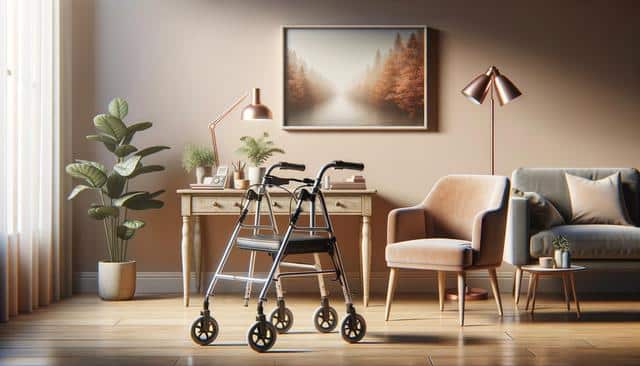
Revolutionizing Mobility: How the Latest Rollator Designs Are Enhancing Lifestyle and Mobility
Modern Engineering Meets Everyday Mobility
Recent developments in mobility aids have led to a new era of rollators and walkers that emphasize both functionality and aesthetics. With a growing awareness of the need for assistive devices that don’t just serve medical purposes but also support an active lifestyle, manufacturers are focusing on sleek, ergonomic designs that offer users more than just basic support. The combination of lightweight materials and streamlined construction makes these new models easier to maneuver, fold, and transport.
Key advancements that are redefining rollators and walkers include:
- Lightweight aluminum frames for enhanced portability
- Foldable designs that simplify storage and travel
- Ergonomic handles that reduce strain on wrists and arms
- All-terrain wheels for better outdoor use
These features not only improve usability but also reduce the stigma once associated with mobility aids. As a result, more individuals feel confident using them in public spaces, enhancing independence and lifestyle quality.
Design That Reflects Personal Style
Gone are the days when mobility aids were strictly utilitarian. Today’s rollators and walkers are designed with aesthetics in mind, acknowledging that users want devices that align with their personal taste. From minimalist monochrome finishes to more vibrant color options, the new generation of mobility aids is as much about style as it is about support.
Several models now offer customizable features that allow users to adapt their rollator or walker to their preferences. This includes:
- Interchangeable fabric seats and backrests
- Optional storage bags and baskets in various styles
- Adjustable height and handle configurations
- Choice of wheel sizes and frame colors
These additions create a sense of ownership and identity, making users more inclined to integrate the device into daily life. This shift toward personalization is not just about appearance—it’s about dignity and empowerment for those who rely on mobility aids.
Enhanced Safety and Comfort Features
Safety continues to be a top priority in the development of modern rollators and walkers. Innovations in braking systems, seating stability, and weight distribution have made these devices safer for a broader range of users. Modern rollators often include padded seats and backrests, giving users the ability to take breaks comfortably during longer outings.
In addition to improved comfort, contemporary models also feature:
- Reflective trims for increased visibility
- Secure locking mechanisms for parked stability
- Shock-absorbing wheels for smoother movement
- Built-in walking cane holders or cup holders
These features contribute to a more secure and enjoyable user experience, especially for those who use mobility aids throughout the day. With better design comes greater peace of mind, encouraging users to remain active and engaged.
Technology Integration in Mobility Aids
The integration of technology into rollators and walkers is another area seeing exciting growth. While still an emerging trend, smart features are beginning to appear in select models, offering support that goes beyond the physical. These aids aim to provide data, connectivity, and even health monitoring to better serve the user’s lifestyle.
Examples of tech-enhanced functionalities include:
- GPS tracking for added safety during outdoor use
- Built-in activity monitors to track steps and movement
- USB ports for charging mobile devices on the go
- Bluetooth connectivity for syncing with health apps
While these features are not yet standard across all models, they represent the direction in which mobility aids are heading. For tech-savvy users or caregivers, these innovations offer a new level of convenience and oversight, especially in independent living scenarios.
Reasons to Consider an Upgrade
For individuals using traditional models, the new wave of rollators and walkers offers compelling reasons to consider an upgrade. The improvements in usability, comfort, and appearance create a more holistic experience that supports not just mobility but overall well-being. Whether you’re navigating city streets, parks, or your own living space, these updated designs provide a significant advantage.
Here are a few reasons why switching to a modern rollator or walker may be beneficial:
- Greater independence and ease of movement
- Increased comfort during extended periods of use
- Stylish designs that suit a variety of personal preferences
- Advanced features that support health and safety
Choosing the right rollator or walker is a personal decision, but the availability of diverse, high-quality options makes it easier than ever to find one that fits your needs. As innovation continues to drive the mobility aid market forward, users can look forward to even more thoughtful and inclusive designs in the future.
Conclusion: Mobility Meets Modern Living
Today’s rollators and walkers are no longer just medical devices—they’re lifestyle enhancers. With thoughtful design, integrated technology, and user-centered features, these mobility aids are helping people stay active, independent, and confident. Whether you’re considering a first-time purchase or an upgrade, the latest advancements in this space offer meaningful improvements that can make daily life more accessible and enjoyable. Embracing modern mobility solutions is not just about getting from point A to point B—it’s about living life fully and on your own terms.